[ad_1]
Resilient crops are vital for making a panorama that’s prepared for any type of climate. Wherever you reside, you can be confronted with some type of climate disaster, whether or not it entails warmth, chilly, drought, flooding, wind or hearth, all of which could be a gardening problem. Deciding on crops immune to excessive temperature modifications, bursts of volatility and radical publicity to the weather might assist to spare your panorama substantial grief.
Irrespective of the place you reside, climate extremes at the moment are the norm. From ice to fireside, it’s laborious to foretell what excessive will befall your panorama. In case you can incorporate some weather-resilient crops in your backyard, you’ll be ready for no matter excessive comes your approach. Listed under are planting solutions which will resist hearth, chilly, warmth, excessive winds, drought or flooding.
Nice Planting Concepts to Defend Your Backyard From Climate Extremes
Most of us select crops for his or her decorative or wildlife worth, however with excessive climate challenges now on the forefront, it pays to include crops which can be robust as nails. Whether or not you might be rising in areas which can be weak to excessive winds, floods or droughts, these crops maintain their very own. Deciding on crops for excessive climate offers you a definite benefit when the weather strike.
1. Crops that Can Stand the Warmth
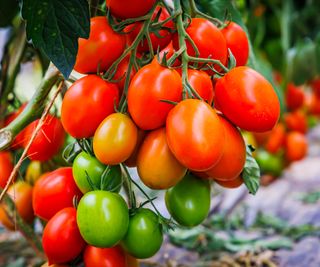
(Picture credit score: Nnattalli / Shutterstock)
If the temperatures are rising in your a part of the nation, you could need to contemplate heat-tolerant vegetable crops. When searching for vegetable seeds search for labels similar to warmth tolerant. You can begin with Southern peas, yardlong beans, okra or candy potato.
- Tomatoes gained’t set seed if temperatures exceed 90 levels Fahrenheit (32°C). Some hybrid cultivars are bred to supply fruit in scorching climates. Strive Summer season Set, Solar Leaper, Photo voltaic Set, Solar Sugar, Heatmaster, Photo voltaic Hearth, Florida 91. For open pollinated varieties strive Roma or Arkansas Traveler. It’s possible you’ll beat the warmth by selecting early maturing tomato cultivars similar to Early Lady and 4th of July.
- In case you like rising lettuce within the backyard however excessive temperatures are inflicting it to bolt, strive these scorching climate vegetable varieties similar to Bronze Arrow, Bronze Magnificence and Merlot.
- One other solution to cool greens throughout a warmth wave is to erect a shade material above the backyard. Or, subsequent season, transfer to a shadier spot. You can also strive rising earlier or later within the 12 months.
2. Planting for Chilly Safety
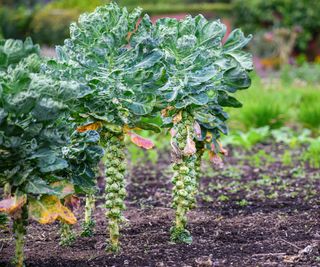
(Picture credit score: Janice Chen / Shutterstock)
To plant greens within the fall for harvesting in spring, you want frost tolerant choices in the event you reside north of zone 10 within the US. Relying on the crop, crops must be within the floor between mid-August to October. A few of the hardiest greens are arugula, broccoli, Brussels sprouts, cabbage, collards, corn salad, fava beans, garlic, kale, kohlrabi, leeks, mustard greens, onions, radish, rhubarb, spinach and turnip. They’ll typically face up to air temperatures under 28°F (-2.2°C).
Semi-hardy crops can tolerate temperatures 28 to 32°F (-2.2 to 0°C) vary. These embrace beets, carrots, cauliflower, celery, chard, Chinese language cabbage, endive, backyard pea, lettuce, parsley, parsnip, radicchio. You may give them further safety from chilly or rain with plastic excessive or low tunnels, cloches, or row covers. For further heat, mulch the winter veggies. Don’t panic if it snows; a blanket of snow will shield the slumbering greens.
3. Drought-Tolerant Planting
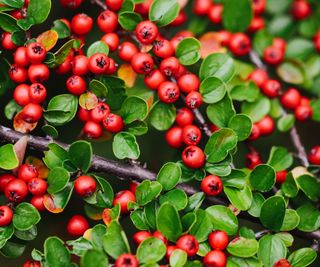
(Picture credit score: Pawel Michalowski / Shutterstock)
Selecting drought-tolerant perennial crops will preserve water and are ultimate to plant the furthest from an irrigation supply, or in the event you reside in an arid local weather. Timber which can be thought of drought tolerant embrace Kousa dogwood, American smoke tree, Ginkgo, Goldenraintree, lacebark elm, river birch, chitalpa, and lots of species of oaks. Shrubs similar to aronia, cotoneaster, pearlbush, panicle hydrangea, spirea, and ninebark are thought of drought tolerant as soon as established. All crops want common watering till they’re effectively established, and that may take as much as a 12 months.
There are such a lot of perennials that qualify as water-wise crops that may aid you save water in your panorama. Examples embrace agastache, hollyhock, coreopsis, echinacea, gaillardia, gaura, daylily, iris, candytuft and sedum. Annuals similar to lantana, pentas, dianthus, rose moss, and cosmos are thought of drought tolerant however could require as much as half an inch (simply over 1cm) of further water every week.
4. Crops To Stand up to Floods
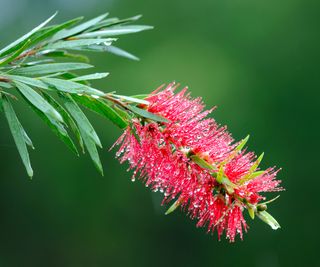
(Picture credit score: Firelia / Shutterstock)
Whereas some crops can tolerate moist situations greater than others, most crops can survive a flood if the waterlogged state of affairs doesn’t final greater than per week. Past that, roots start to die due to the shortage of oxygen in water-compacted soils. In case you reside in an space that’s susceptible to flooding, it’s useful to plant timber, shrubs, and perennials which can be recognized to be flood-tolerant crops.
For timber, bald cypress, boxelder, river birch, Canary Island date palm, crape myrtle, black cottonwood, Dahoon holly, widespread hackberry, bur oak, and pin oak can tolerate moist soils. For shrubs, select bottlebrush, Douglas spirea, crimson twig dogwood, American elderberry, widespread pussy willow and Virginia sweetspire. Powerful perennials embrace perennial milkweed, muhly grass, gardenia and bougainvillea.
5. Hearth-Resistant Planting
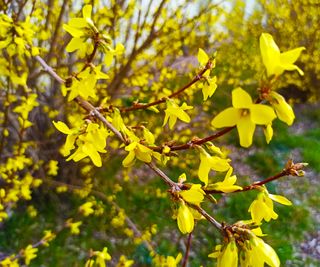
(Picture credit score: Butterfly’s Dream / Shutterstock)
It is very important select fire-resistant crops that will likely be near your private home, similar to basis crops. Native crops usually are extra firewise, particularly drought-tolerant native crops which have a excessive inner water content material. Hearth-resistant crops are inclined to have moist, supple leaves, non-aromatic sap, and are sluggish to burn.
Shrubs that meet fire-resistant tips embrace azalea, butterfly bush, camelia, forsythia, lilac, rose of Sharon, spirea, and viburnum. Deciduous timber similar to oak, maple, redbud, and dogwood are fascinating, however most conifers are thought of extremely flammable and shouldn’t be rising subsequent to constructions.
Groundcovers appropriate close to the house embrace ajuga, sedum, hen and chicks, and creeping thyme. Perennial crops which can be firewise embrace daylily, iris, echinacea, hosta, columbine, bulbs, and coreopsis.
Crops which can be thought of flammable have resinous, fragrant sap; dry, lifeless materials; papery bark; and/or include oils. If you’re planning a firewise panorama keep away from conifers, palms, sagebrush, rosemary, eucalyptus, and fountain grass, in addition to different dry decorative grasses.
6. Wind-Proof Planting
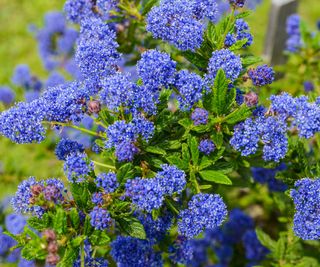
(Picture credit score: Ajdin Kamber / Shutterstock)
It’s additionally vital to decide on wind-resistant crops in areas the place excessive winds have gotten extra of a function. Timber that do effectively in windy websites are inclined to have a robust department construction with well-spaced limbs. Conifers similar to pine timber additionally make efficient crops for prime winds, as do cypress, juniper and Chamaecyparis. Oak timber and dogwood are also excessive on the checklist of wind-resistant crops. Selecting timber and shrubs for a windbreak or to create a barrier round your property will assist shield the crops inside. Different crops that resist excessive winds embrace cotoneaster, ceanothus (California lilac) and pittosporum.
[ad_2]


